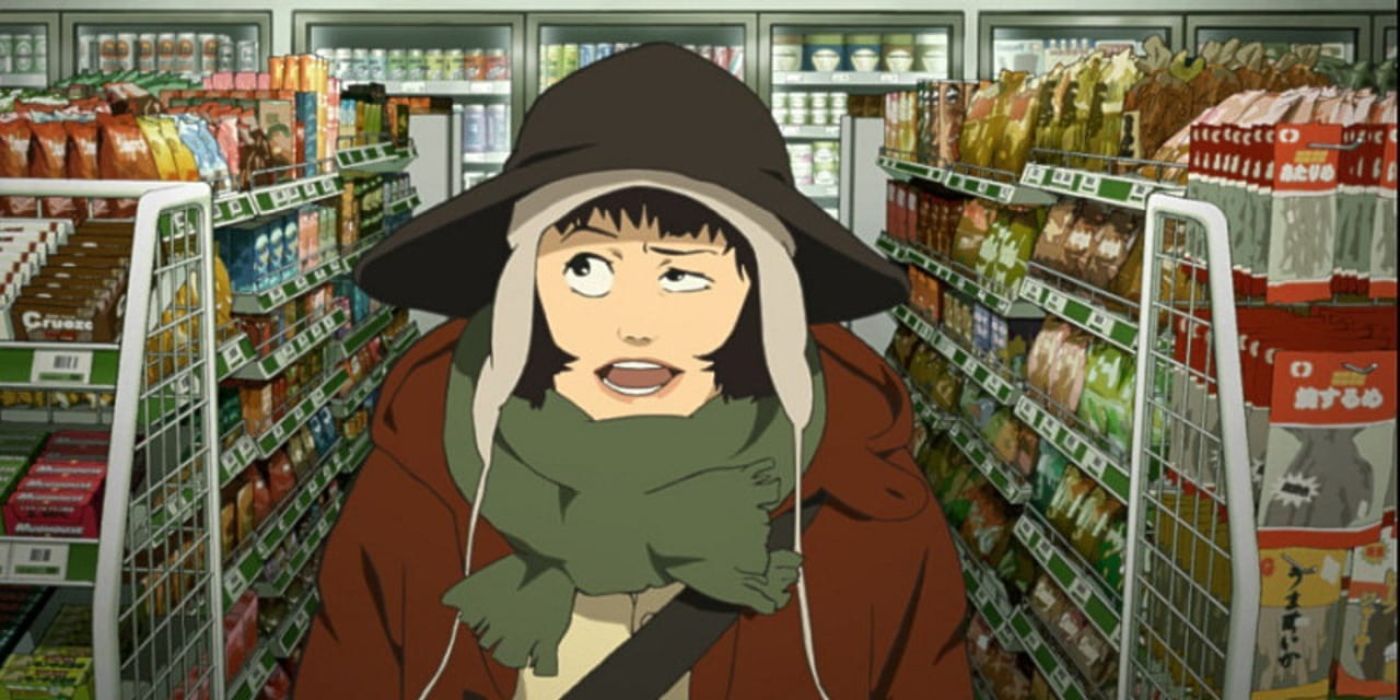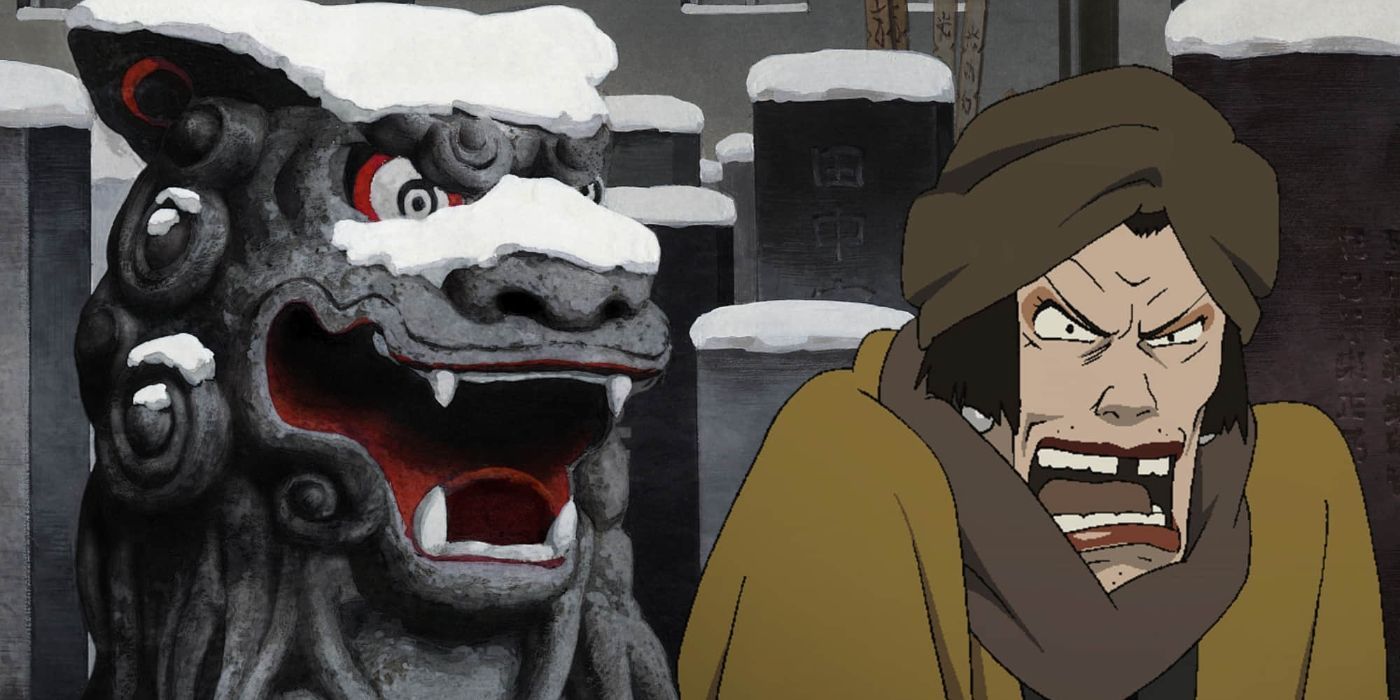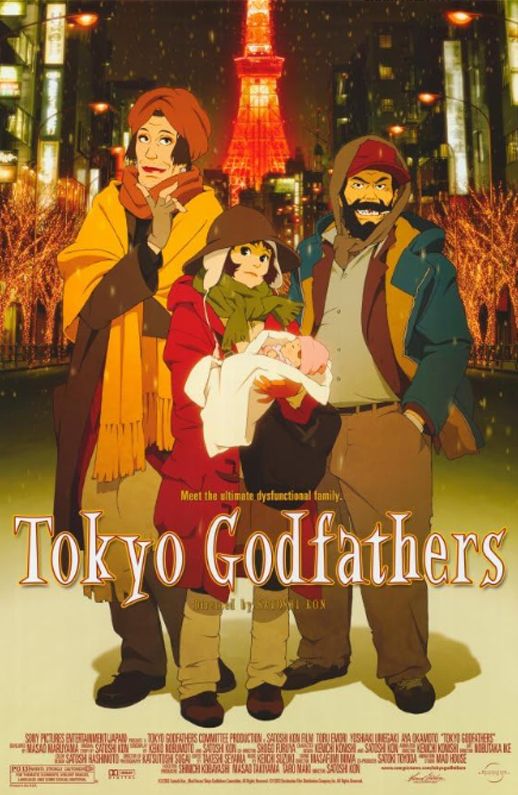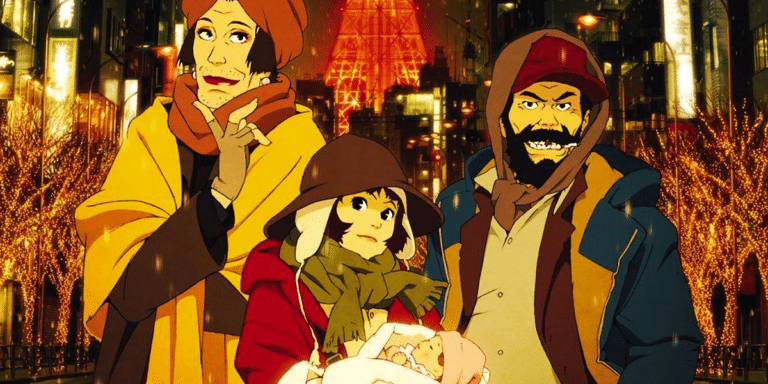
Summary
- Satoshi Kon’s Tokyo Godfathers offers a heartfelt look at found families and social outcasts who come together to care for an abandoned baby.
- The film explores complex themes of family and redemption, presenting a different side of Japanese society through its unique characters.
- Compared to Kon’s other works, Tokyo Godfathers is more down-to-earth and focuses on everyday miracles, blending reality with magical realism.
There are many acclaimed anime directors, but one of the best and most prolific is undoubtedly Satoshi Kon. Known for his subversive and often psychological works, this visionary has made some of the best animated films of all time. Among Satoshi Kon’s psychological filmography is a classic film that, despite being over 20 years old, was very avant-garde and presented a different side of Japanese society.
The Godfathers of Tokyo is an acclaimed film that truly highlights the themes of found families. and the outcasts of society who support each other. It’s a bit different from Kon’s other works, while still having the same artistic level as those films. Showcasing the triumphs and struggles of the Japanese people of the time, it’s a perfect example of the more realistic types of storytelling seen in animation.
What is Tokyo Godfathers about?
Streaming on: Tubi, Pluto TV, The Roku Channel and Amazon Prime Video
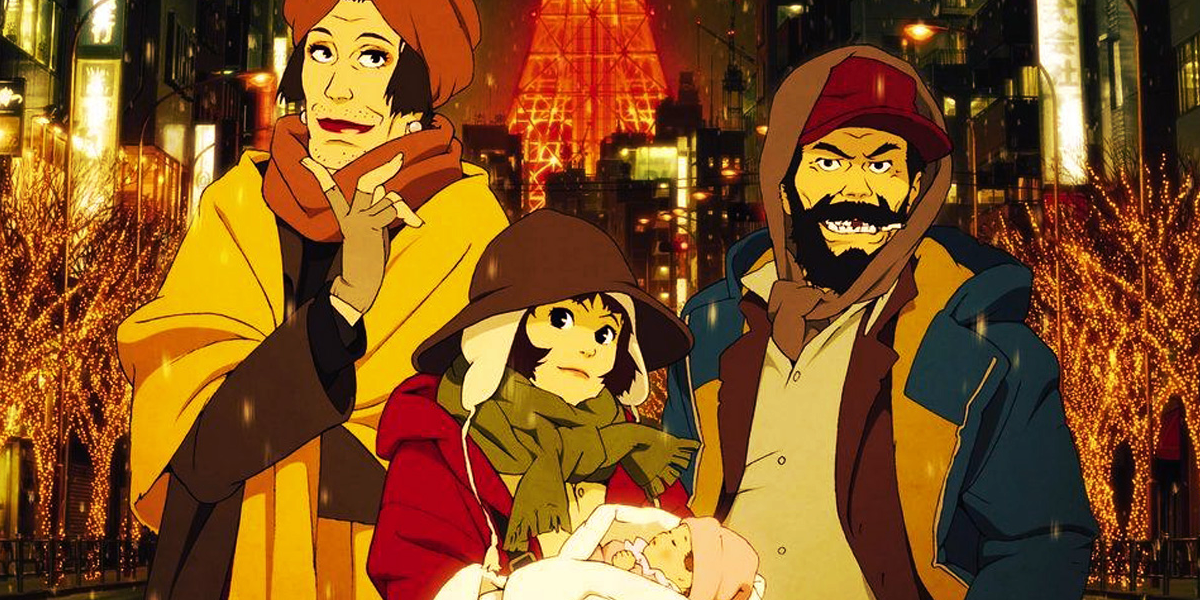
Related
Favorite slice-of-life animated movie
While anime films often feature characters with supernatural or magical powers, many excellent anime films focus on ordinary, everyday people. Satoshi Kon’s Tokyo Godfathers, for example, is a gripping and emotionally deep film about three homeless people searching for the parents of an abandoned baby. What’s your favorite slice-of-life anime film?
Originally published in 2003, The Godfathers of Tokyo was inspired by (but is not a true remake of) the western film 3 Godfathersitself based on a short story of the same name. The film takes place on Christmas Eve, with three homeless people (a young girl named Miyuki, an alcoholic named Gin, and a transgender woman named Hana) finding a baby in the nearby trash. Together, they search for the child (whom they name Kikyo) and attempt to find her parents. While examining clues left by her mother, the trio encounters all sorts of people throughout Tokyo, both good and bad. From unruly teenagers to a member of the Yakuza, these people aid them on their journey while forcing them to confront their own issues and traumas.
The initial idea of The Godfather of Tokyo was born while the film’s future director, Satoshi Kon, was working on Actress of the millenniumwith the proposal for the new film project accepted a few months later. Kon worked on the script with Keiko Nobumoto, who is also known for writing the iconic Cowboy Bebop anime series. Given this illustrious pedigree, it’s no wonder the film ended up being one of the two creators’ best works. The film is often dark, with the events of the season juxtaposed with the harsh realities experienced by the characters. There’s a strong sense of cruelty that might have been lost in live-action or as a manga. For this reason, the film’s animation was certainly the best way to bring the story to life.
The Godfathers of Tokyo was produced with digital technology, and the film managed to strike a fine balance between a realistic and gritty story and rather animated and colorful characters. It was produced by the illustrious Madhouse studio, which is behind several major animated series and notable animated films such as Ninja Scroll. True to those other works, the animation is stunning and stylized when it needs to be, but equally frightening and human in the quieter, more emotional scenes. Because as over-the-top as they may seem at times, the characters were at the heart of what made the film so successful, as well as what made it so different from what had come before in the director’s filmography.
Tokyo Godfathers plays with the idea of family in the most sincere way.
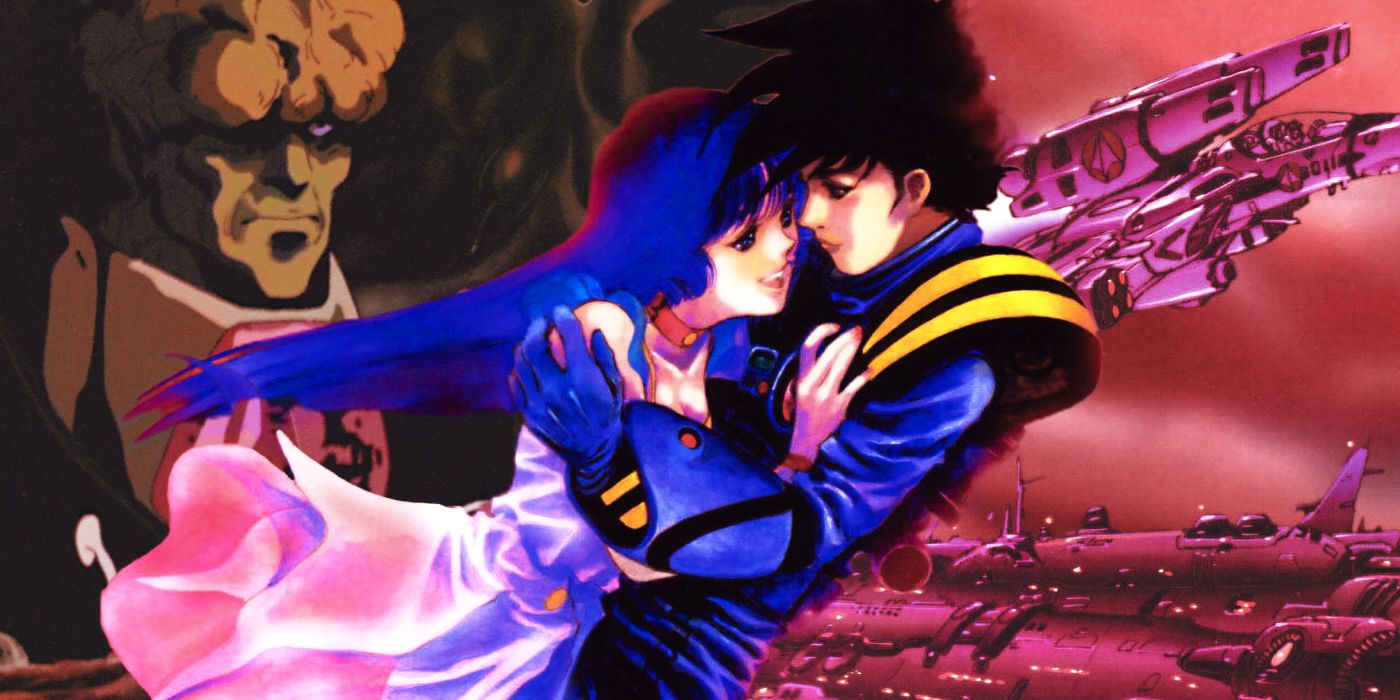
Related
This iconic animated film is now 40 years old
Macross: Do You Remember Love? was the first film in the iconic mecha series, and the mecha musical romance is now celebrating its 40th anniversary.
A central concept in The Godfathers of Tokyo This is how the film plays with the conceptions and stigmas surrounding the idea of family. and various groups in Japanese society. For example, Gin is an alcoholic and down on his luck, and it is later revealed that he is estranged from his daughter. This creates the sense that he has abandoned his family, casting him in an unsympathetic light. At the same time, he is essentially the patriarch of the ragtag group, even if he is briefly denigrated by them. This highlights the moral yin and yang of people, and how someone who is otherwise considered an upstanding person can have certain flaws or major mistakes that they have made.
Similarly, Miyuki is a young girl who runs away from home after stabbing her father. She believes that he got rid of her pet, but when she realizes that he didn’t, she becomes disheartened about the possibility of returning home. Miyuki and Gin are the best examples of the film’s main theme: family, both lost and found. In the same way, they rejected the family they created or were born into, in both cases for misguided, even selfish reasons. Now lost and adrift, they search for some semblance of what they had, recreating makeshift families before truly trying to reconnect with their biological families. It’s also worth noting that Kiyoko’s “mother” is not her real mother, but stole her to cope with the loss of her own child. So, she and the child are torn away from the families they were meant to have. Kon even spoke about this concept, namely how the idea of homelessness in the film involves more than just the characters’ housing situation:
Homeless people, as the term suggests, “have no home,” but in this film it’s not just “people who have lost their home,” but also “people who have lost their family,” and in that sense this film is a story about restoring lost relationships with families.
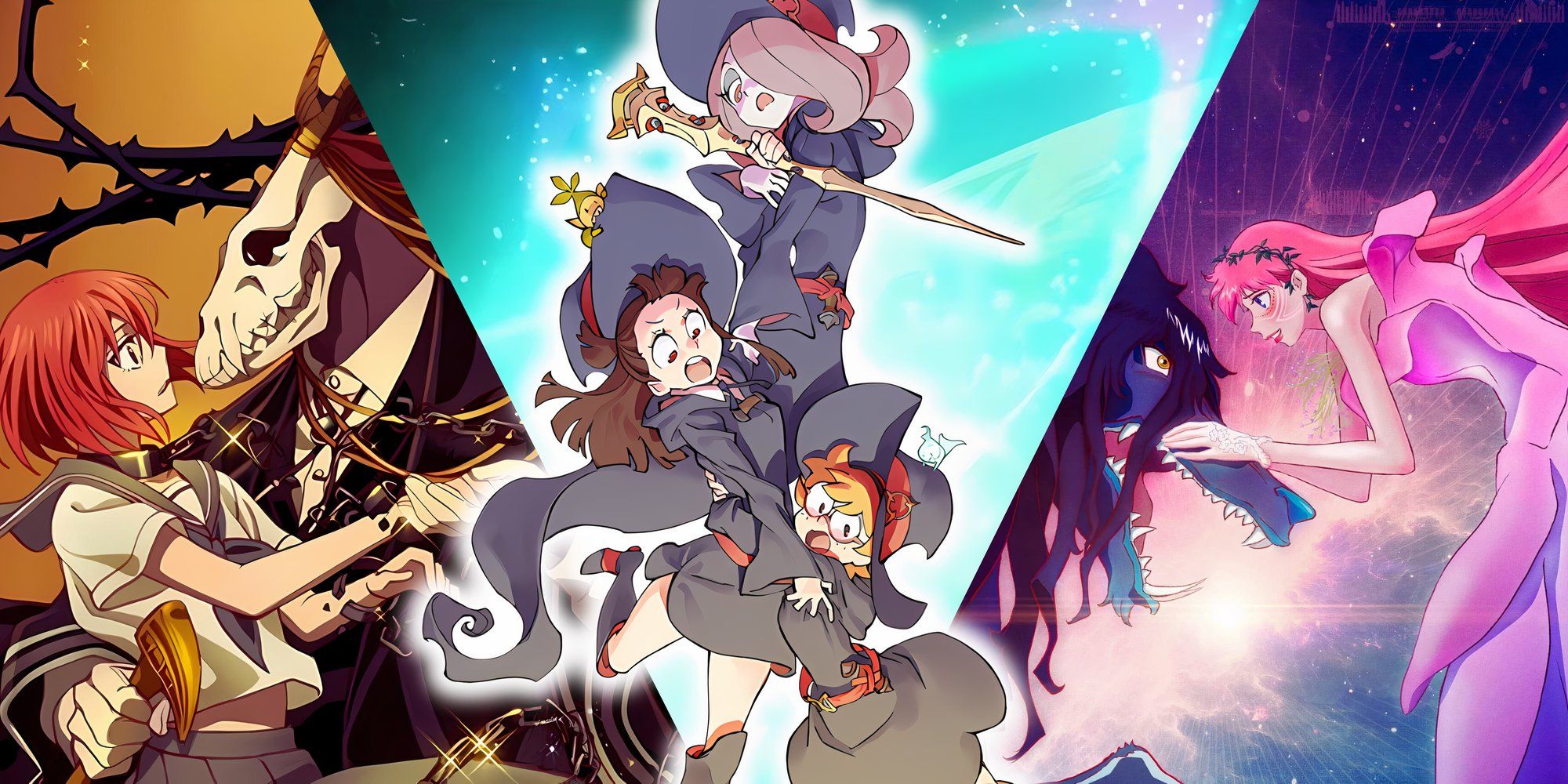
Related
Top 10 Animes If You Like Disney Movies
From tales of plucky heroines to magical worlds with musical scores, here are the best anime for Disney fans.
Although ties to biological family are important in The Godfathers of TokyoThe idea of the makeshift family or “found family” in the story is not secondary. Hana, Gin, and Miyuki are there for each other throughout the film, and the same goes for the other people they meet. For example, they help a yakuza boss who is trapped under his car, while Miyuki befriends the wife of a Latino hitman who kidnaps her. The sometimes painful situations in The Godfathers of Tokyo are enhanced by the fact that each of the characters is able to find a shared humanity between them and those who are also in this situation. By the end of the film, many of their biological family relationships, while not completely healed, are in the process of being rebuilt. Similarly, the three protagonists are chosen by Kiyoko’s real parents to be the child’s godparents, “officially” uniting their families into one.
Most of the characters are also outcasts in some way. Gin is an alcoholic who even Hana takes to task at one point, while Hana is a transgender person in early 2000s Japan. Even Miyuki is something of a moral dissident in Japanese society, running away from home, especially after stabbing her own father. Supporting characters include a Yakuza member and a foreign hitman, neither of whom would be exactly celebrated or considered ordinary individuals. Once again, this outcast status only strengthens the film, with those looked down upon by society at large finding solace in others like themselves and representing the many forms that family and love can take.
Other Satoshi Kon films vs Tokyo Godfathers
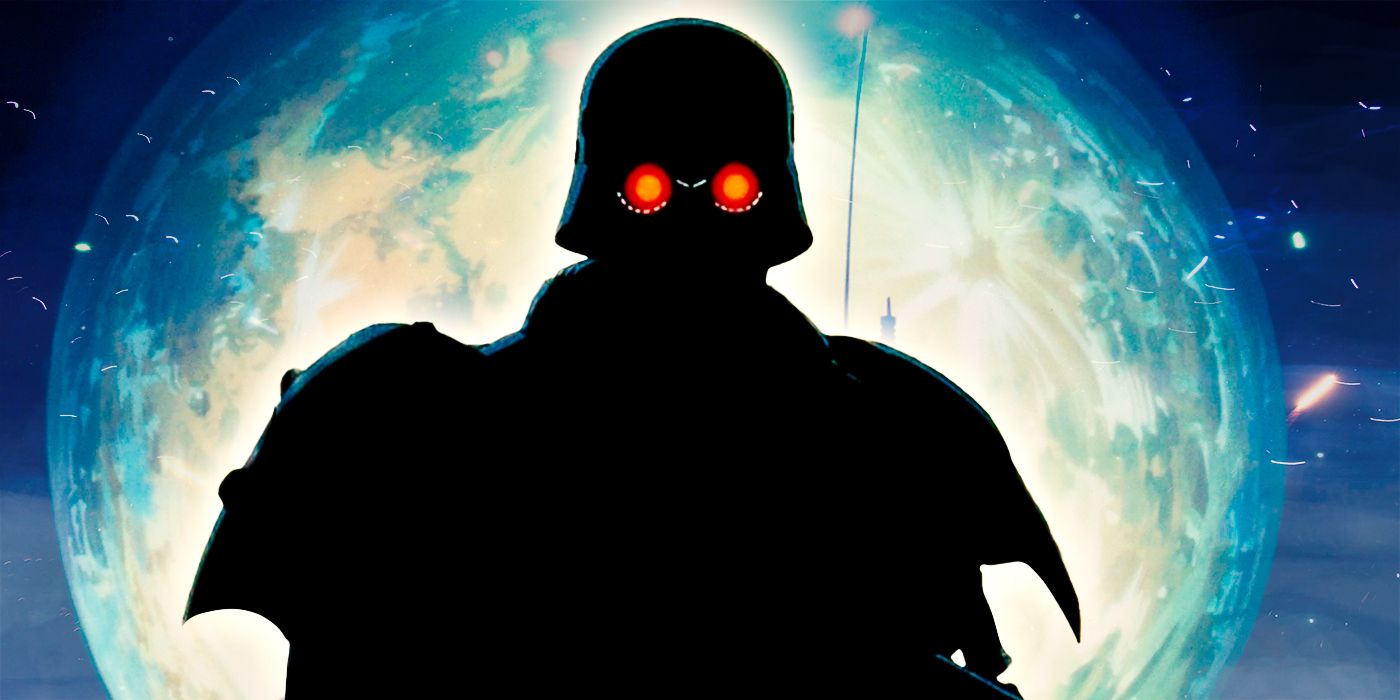
Related
This Underrated ’90s Animated Action Movie Is More Relevant Than Ever
Although overshadowed by works such as Ghost in the Shell, Jin-Roh is an excellent animated film that encapsulates a universal but relevant politics.
Compared to other Satoshi Kon films, The Godfathers of Tokyo is quite different in terms of scope. Films such as Paprika And Actress of the millennium are much more esoteric and are known for mixing and blurring the lines between fiction and reality. Perfect Blue does so with a story involving an old Japanese idol group, while Actress of the millennium It’s about an aging movie star who is investigated as she loses touch with reality from her previous roles. Alongside these films, The Godfathers of Tokyo is much more realistic and does not ask such questions about the nature of truth and fantasy. At the same time, it presents one of the most underrated examples of “magical realism.” The conclusion of The Godfathers of Tokyo evokes the idea of everyday miracles in mundane contextswith the grounded nature of the film giving way to what seems like pure serendipity.
It’s done in a way that seems almost impossible, all without breaking the nature of the film so far. It could also be argued that the film’s concepts of family, whether “real” family or found family, are also tied to reality/fiction, albeit in a less psychological way. In other words, the characters in The Godfathers of Tokyo Characters deny the reality they’re given and choose their own, regardless of whether it fits society’s expectations or mores. Examples include the woman who claims to be Kikyo’s mother, Hana’s identity, the Yakuza leader’s lifestyle, and even the three main characters chosen as Kikyo’s godparents. Things that seem tenuous at first are cemented by the end, and it creates a story that is timeless in both themes and societal progression. Regardless of the protagonists’ status as mainstream or outcast, they are able to find love, family, and companionship in a season where those ideas are supposed to be most shared.
